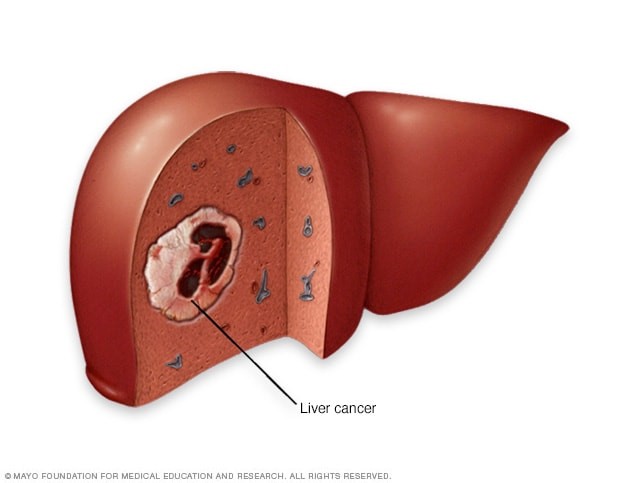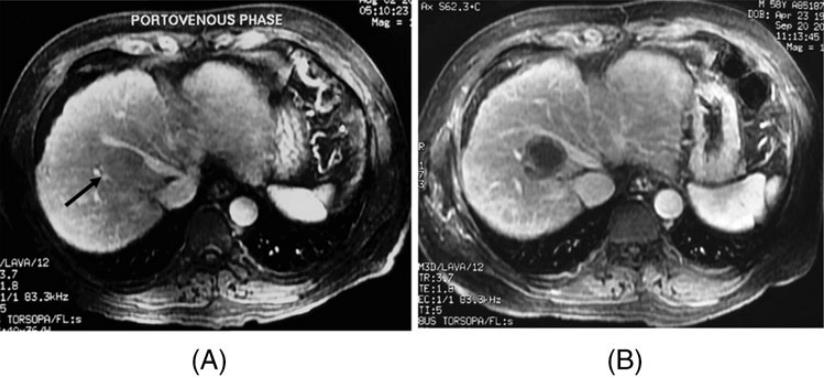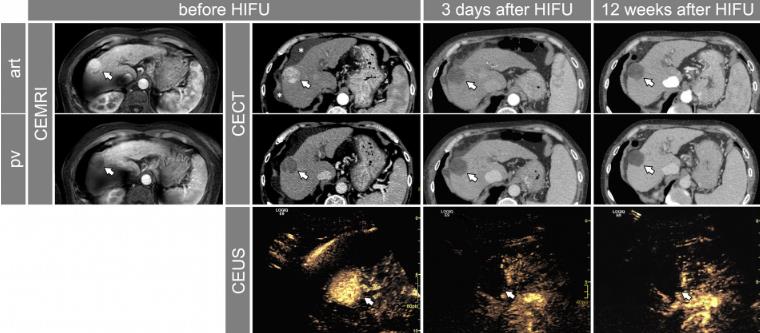About

Some of the most prevalent malignancies worldwide are found in the liver, both primary and secondary tumors. Hepatic metastases are a leading cause of death in cancer patients, with 20–30% of those diagnosed with colorectal cancer already having liver metastases at the time of diagnosis. Liver cancer is cancer that begins in the cells of your liver. Your liver is a football-sized organ that sits in the upper right portion of your abdomen, beneath your diaphragm and above your stomach.
Several types of cancer can form in the liver. The most common type of liver cancer is hepatocellular carcinoma, which begins in the main type of liver cell (hepatocyte). Other types of liver cancer, such as intrahepatic cholangiocarcinoma and hepatoblastoma, are much less common.
Cancer that spreads to the liver is more common than cancer that begins in the liver cells. Cancer that begins in another area of the body — such as the colon, lung or breast — and then spreads to the liver is called metastatic cancer rather than liver cancer. This type of cancer is named after the organ in which it began — such as metastatic colon cancer to describe cancer that begins in the colon and spreads to the liver.
Current treatment methods
Treatments for primary liver cancer depend on the extent (stage) of the disease as well as your age, overall health and personal preferences.
Surgery
Operations used to treat liver cancer include:
Surgery to remove the tumor. In certain situations, your doctor may recommend an operation to remove the liver cancer and a small portion of healthy liver tissue that surrounds it if your tumor is small and your liver function is good.
Liver transplant surgery.
Heating cancer cells.
Freezing cancer cells.
This treatment uses high-powered energy from sources such as X-rays and protons to destroy cancer cells and shrink tumors. Doctors carefully direct the energy to the liver, while sparing the surrounding healthy tissue.
Radiation therapy might be an option if other treatments aren't possible or if they haven't helped. For advanced liver cancer, radiation therapy might help control symptoms.
Targeted drug therapy
Immunotherapy
Chemotherapy
Supportive (palliative) care
What type of liver cancer patients is particularly well suited for HIFU?
Patients with hepatocellular carcinoma (HCC), even in the presence of advanced cirrhosis and gross ascites. For those patients whose tumors are relatively small, located at the dome of the liver, with clinical evidence of ascites or pleural effusion, HIFU would be an alternative as long as the lesion can be visualized and located by USG. HIFU is a promising treatment for HCC. Its application on
tumors situated in the liver dome, close to the rib cage, or in close proximity to the stomach, bowel, gallbladder heart, major blood vessels or bile ducts presents unique challenges. However, meticulous pre-procedural preparation and special maneuvers during HIFU can achieve complete ablation with few complications.
How does HIFU work for liver cancer (the advantages)?
HIFU has been shown to be a valuable tool in the management of small HCC, even in the presence of advanced cirrhosis and gross ascites. By raising the target tissue temperature to greater than 60°C, its transcutaneous delivery of focused ultrasound energy results in thermal protein coagulation of the target tissue within the HCC, resulting in ablation of the target. The HIFU system utilizes a unique frequency of ultrasound of 0.8–3.5 MHz, which can be focused onto the target tissue by an externally-located transducer. The resultant heating of the target tumor tissue upon energy delivery is very localized, thereby sparing collateral thermal damage to the surrounding healthy tissue.
Clinical evidence
According to Extracorporeal High Intensity Focused Ultrasound Ablation in the Treatment of Patients with Large Hepatocellular Carcinoma, 55 patients with large HCC (with a mean diameter of 8.14 cm) and cirrhosis in the study received HIFU treatment, no major complications were recorded. Completeness of ablation was assessed in 26 patients and the complete ablation rate was 69.2%. The overall survival rates were 61.5% at 12 months and 35.3% at 18 months. In another study by the same group, the efficacy of HIFU combined with chemoembolization was compared with that of chemoembolization alone in 50 patients with advanced HCC. Patients who underwent combined treatment had significantly better survival than those who received chemoembolization alone.
Cases for liver cancer treatment

Fig.1 MRI scan shows a 2.7-cm segment VIII HCC before (A) and after (B) HIFU treatment. Arrow indicates the tumor impinging on the middle hepatic vein before HIFU treatment. Complete ablation was achieved after a single session of HIFU treatment without pretreatment Lipiodol deposition.

Fig.2 Subcapsular hepatocellular carcinoma before and after HIFU (arrows). 3 days safter therapy, the ablated tumor is avascular with no contrast agent uptake, which indicates successful treatment.
Notes: HIFU, high intensity focused ultrasound; CEMRI, contrast enhanced magnet resonance imaging; CECT, contrast enhanced computed tomography; CEUS, contrast enhanced ultrasound; art, arterial contrast phase; pv, portal venous contrast phase.
- Patient stories
After being told to have untreatable liver cancer, Ms. Wang’s brother (Mr. Wang is form Taipei, and received HIFU treatment many years ago for uterine fibroids and got expected results) came to Chongqing Haifu Hospital with the encouragement from his sister. After undergoing the comprehensive therapy several times, he was “saved by HIFU” and “leads a healthy and happy life.”